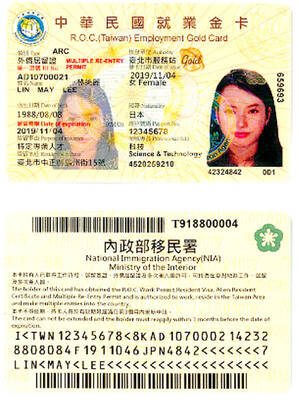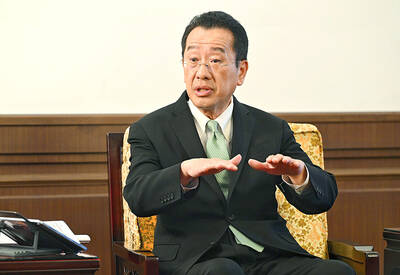For 52 years, the Walt Disney Co has called Disneyland, its Southern California theme park, "the happiest place on earth."
But now Disney is angry that the city of Anaheim, where the park is based, has approved plans for 1,500 apartments on a site zoned for tourist facilities.
In February, Disney sued the city, hoping to force it to abandon the decision permitting the project. The development would have 225 subsidized units, and advocates of affordable housing are accusing Disney of turning its back on low-income residents, including many of its own employees.
Disney argues that it is simply trying to make Anaheim an attractive place for tourists. In the 1950s, Walt Disney, the company's founder, bought 98.7 hectares in Anaheim, for which he paid about US$11,000 a hectare. By the time the park opened, in 1955, Disney wished it had bought more.
In fact, Disneyland's success spawned thousands of acres of development around the park including some that the company found tacky. The disputes that arose have forced Anaheim to take sides, and it has almost always taken Disney's.
But the relationship between Anaheim and its largest employer has become strained over the planned housing, on a 10.5-hectare site that now holds a trailer park.
Theresa Medina, an Anaheim resident, was visiting relatives at the trailer park this month. She said that one-bedroom apartments in Anaheim can cost US$1,400 a month, and that many landlords won't rent to large families. The prices and the occupancy restrictions cause many workers to commute long distances, she said.
Lorri Galloway, one of three on the five-member Anaheim City Council who voted in favor of the housing project, said, "Research shows that we have a need in and around the resort area for 27,000 units of affordable housing."
By trying to block some of that housing, she said, Disney is showing "complete disregard for the workers who make the resorts so successful."
But Rob Doughty, a spokesman for the Disneyland Resort, said the goal was simply to keep housing out of an area zoned for resort development in 1994.
Once the special zoning district was created, "the state and federal governments invested billions of dollars to clean it up," he said.
Disney and others then began building lavish facilities, including Disney's 745-room Grand Californian Hotel and Spa, which opened in 2001.
"And now they want to throw all that away," he said, referring to the City Council.
Doughty added that "companies like Marriott and Disney and Hilton make their investment decisions on what they assume the zoning is going to be."
Anaheim Mayor Curt Pringle, who voted against the plan, said he understood the frustration that led Disney to file a lawsuit: "I certainly think they have a legal right to protect their interests."
"No one contemplated that three members of the City Council would turn their back on that engine of economic development within the city," he said.
The controversy began when the SunCal Co, a developer based in nearby Irvine, signed a contract to buy 10.5 hectares and announced plans to build 1,300 condominiums and 225 rental units on the site.
Frank Elfend, a project manager for SunCal, said the idea for affordable housing came about in consultation with the city.
"Whenever you do a big project, you talk to the community about what their needs are," he said. "In Anaheim, the priority was affordable housing."
SunCal's approach won the support of several City Council members. The council approved the project in February, leading Disney to file its first lawsuit ever against the city.
Late last month, at the end of a contentious six-hour public hearing, the City Council voted 3-2 to reaffirm its support for the housing project, ensuring that the litigation would continue.
Pringle, who opposed the new housing, said that Anaheim was building at least as much affordable housing as any other city in Orange County, and that it would build more when it found appropriate sites.
Doughty said that hotels and restaurants, which operate around the clock, are incompatible with permanent housing.
"It doesn't matter that it's low-income housing," he said, explaining that Disney objects to any new housing in the resort area.
Indeed, Disney has recently objected to another proposed project, called Parc Anaheim, at the edge of the resort area.
The SunCal site is about 1.6km from the Magic Kingdom and 0.80km from Disney's California Adventure, which opened in 2001.
But it is directly opposite an 35.6 hectare plot on which Disney is considering building a third park, which is likely to include boutique attractions. Doughty confirmed that the third park was a possibility, but said it would probably not be announced this year.
Cynthia Ward, an architectural historian who lives in Anaheim, said that "there is essentially no place left to live in Orange County for people with extremely low-income jobs," but that, even so, the resort area should be protected.
"Yes, we need affordable housing," she said, "but it doesn't have to be on that site."

GAINING STEAM: The scheme initially failed to gather much attention, with only 188 cards issued in its first year, but gained popularity amid the COVID-19 pandemic Applications for the Employment Gold Card have increased in the past few years, with the card having been issued to a total of 13,191 people from 101 countries since its introduction in 2018, the National Development Council (NDC) said yesterday. Those who have received the card have included celebrities, such as former NBA star Dwight Howard and Australian-South Korean cheerleader Dahye Lee, the NDC said. The four-in-one Employment Gold Card combines a work permit, resident visa, Alien Resident Certificate (ARC) and re-entry permit. It was first introduced in February 2018 through the Act Governing Recruitment and Employment of Foreign Professionals (外國專業人才延攬及雇用法),

CAUTION URGED: Xiaohongshu and Douyin — the Chinese version of TikTok — are tools the Chinese government uses for its ‘united front’ propaganda, the MAC said Mainland Affairs Council (MAC) Minister Chiu Chui-cheng (邱垂正) yesterday urged people who use Chinese social media platforms to be cautious of being influenced by Beijing’s “united front” propaganda and undermining Taiwan’s sovereignty. Chiu made the remarks in response to queries about Chinese academic Zhang Weiwei (張維為) saying that as young Taiwanese are fond of interacting on Chinese app Xiaohongshu (小紅書, known as RedNote in English), “after unification with China, it would be easier to govern Taiwan than Hong Kong.” Zhang is professor of international relations at Shanghai’s Fudan University and director of its China Institute. When giving a speech at China’s Wuhan

ENHANCE DETERRENCE: Taiwan has to display ‘fierce resolve’ to defend itself for China to understand that the costs of war outweigh potential gains, Koo said Taiwan’s armed forces must reach a high level of combat readiness by 2027 to effectively deter a potential Chinese invasion, Minister of National Defense Wellington Koo (顧立雄) said in an interview with the Chinese-language Liberty Times (sister newspaper of the Taipei Times) published yesterday. His comments came three days after US Secretary of State Marco Rubio told the US Senate that deterring a Chinese attack on Taiwan requires making a conflict “cost more than what it’s worth.” Rubio made the remarks in response to a question about US policy on Taiwan’s defense from Republican Senator John Cornyn, who said that Chinese

The zero emissions ship Porrima P111 was launched yesterday in Kaohsiung, showcasing the nation’s advancement in green technology, city Mayor Chen Chi-mai (陳其邁) said. The nation last year acquired the Swiss-owned vessel, formerly known as Turanor PlanetSolar, in a bid to boost Taiwan’s technology sector, as well as ecotourism in Palau, Chen said at the ship’s launch ceremony at Singda Harbor. Palauan President Surangel Whipps Jr and Minister of Foreign Affairs Lin Chia-lung (林佳龍) also attended the event. The original vessel was the first solar-powered ship to circumnavigate the globe in a voyage from 2010 to 2012. Taiwan-based Porrima Inc (保利馬) installed upgrades with